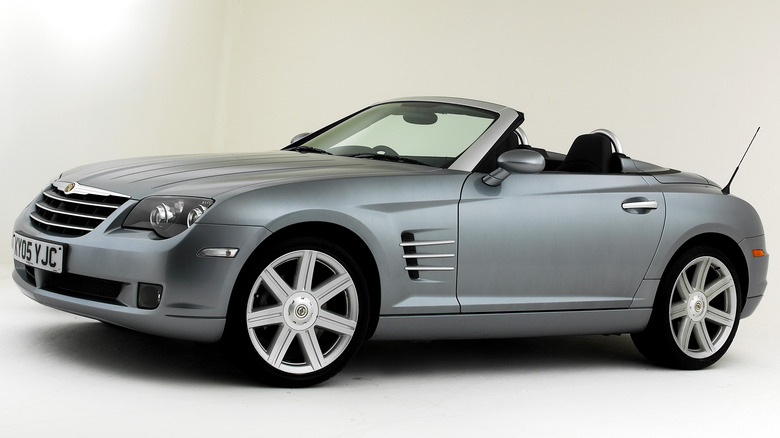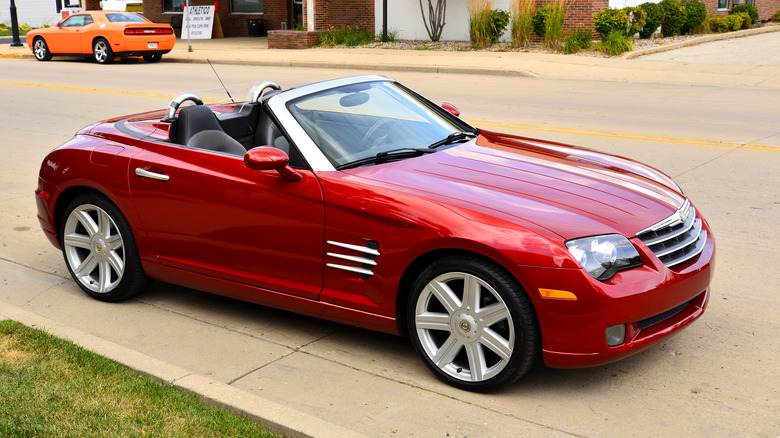The Reason Chrysler Discontinued The Crossfire After Only 4 Years
The Chrysler Crossfire was an odd vehicle to say the least. It was only made from 2004 to 2008, and probably for good reason.
It was, ostensibly, a sports car from an automaker that wasn't known for sports cars. At the time, Chrysler itself was known for the Town and Country minivan and PT Cruiser. The minivans were extremely capable family haulers that enjoyed generational success. The PT Cruiser wasn't as lucky.
So why would Chrysler, of all brands, make a sports car? It was partly due to Chrysler's then-partnership with German automaker Mercedes-Benz. The Chrysler Crossfire actually borrowed several components from Mercedes' own roadster, the much more successful SLK (via Car and Driver).
On paper, the Crossfire looked like it would be a hit or at least a competent sports car. The 3.2L V6 was borrowed from the Germans and made over 200 horsepower. That wasn't bad at all nearly 20 years ago. Chrysler even made a sportier version called the Crossfire SRT-6. That car boasted a supercharger and 330 horsepower.
Indecision was the real killer of the Crossfire. The car could not decide whether or not it was a sporty and light car like the SLK, or a Sunday cruiser like its brand sibling, the Sebring.
A confused Chrysler
The Crossfire had mechanical components seemingly squared away. The exterior was a different question entirely. On the outside, the Crossfire at least looked sporty. The SRT-6 versions even came with a factory wing that looked out of place at best, and cheap at worst. The styling was divisive. Publications many years ago praised the Crossfire's exterior. Today, the design looks downright weird.
Reviewers from the time actually enjoyed the Crossfire's handling characteristics. After all, it's hard to balk at a supercharged two-door, even if it looks like an angry Sebring with no trunk.
The interior was where the Crossfire really fell apart. MotorBiscuit reports that the interior was cramped. It had all the space-age accouterments of a German-engineered sports car and all the leather-clad comforts of a LeBaron from a quarter-century ago. That resulted in a confusing interior.
The Crossfire is an example of trying too much and failing at all of it. Over its lifespan, Chrysler sold just over 34,000 Crossfires in the United States before sending the model off into the wild blue yonder. Publications at the time may have liked the Crossfire, but customers seemed to buy sports cars that actually knew what they were doing.

